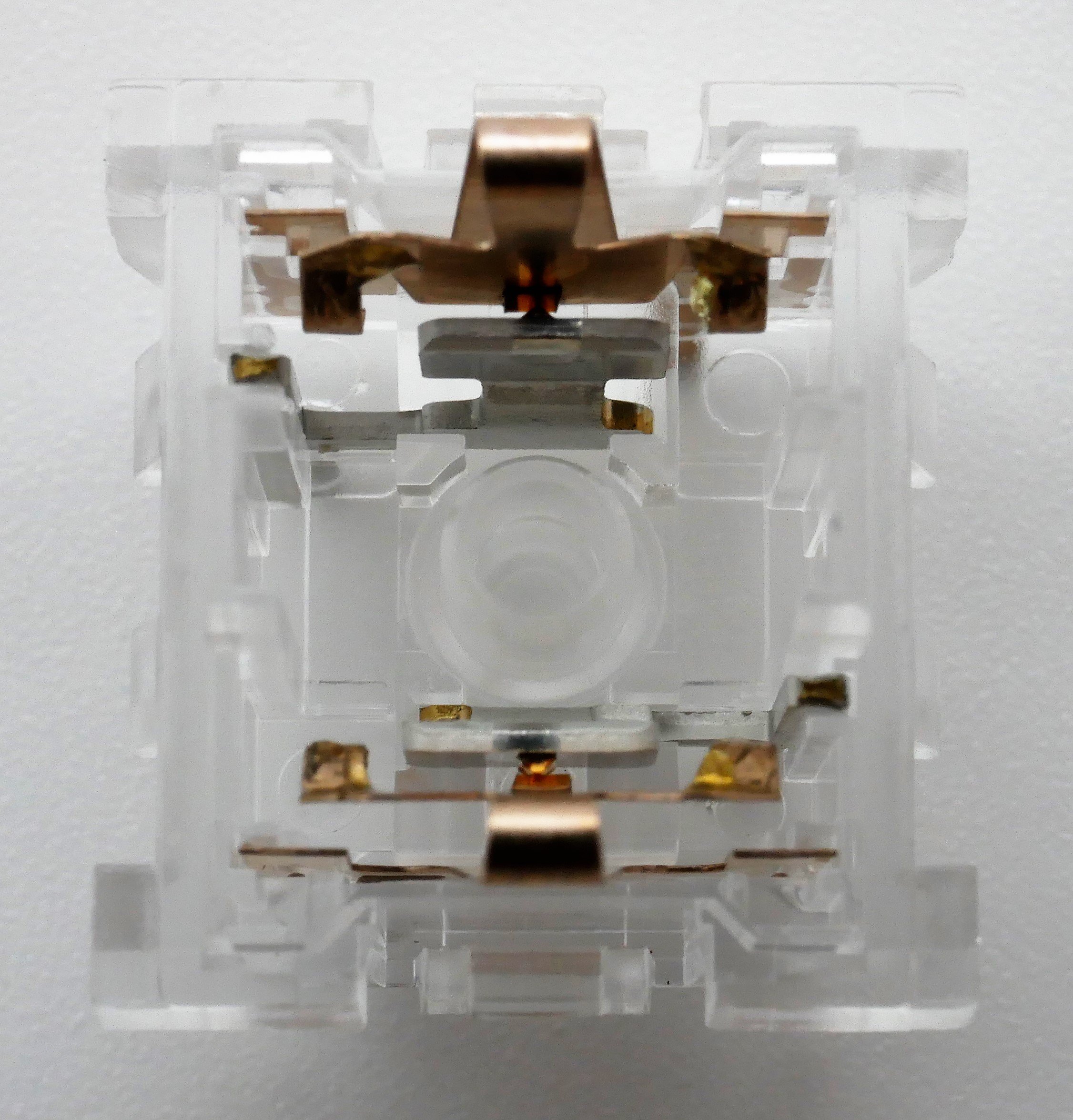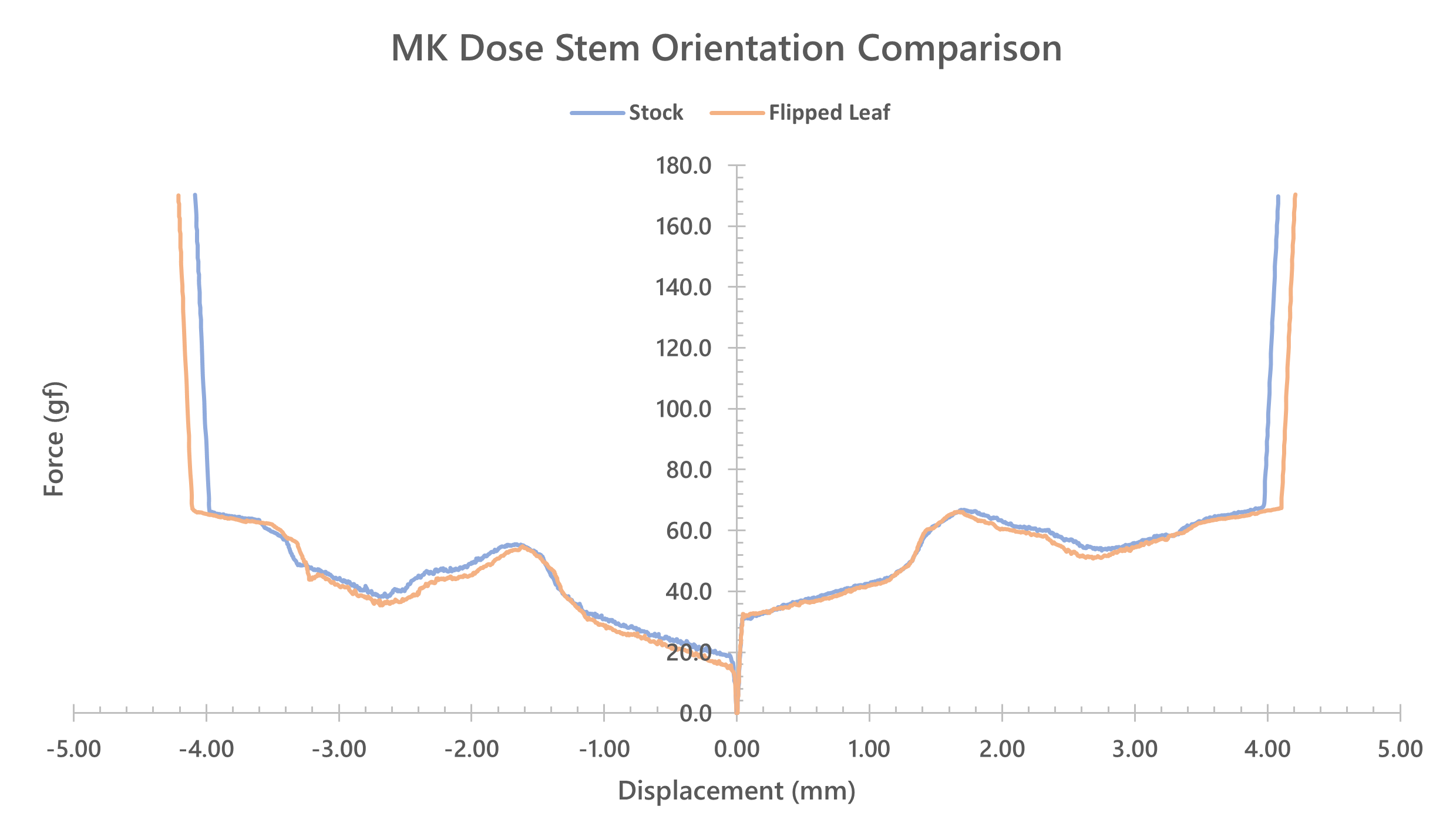Odd Switch Short III: MK Dose
As someone who primarily looks at switches on their own, or at least largely separate from their intended use case in mechanical keyboards, I have to admit that the MK Dose switches initially struck me as incredibly odd. Released by MechanicalKeyboards.com (shortened for the rest of this article as MK) sometime around the border of Q2 and Q3 in 2023, these special switches came only preinstalled in the ‘MK Duo 60% XT Keyboard’ and have yet to have any sort of separate sales allowing for other enthusiasts to test them out. Seemingly following on the heels of Kailh’s innovative streak in recent months as well as Gateron/Zeal’s recent attempts at modifying traditional MX-style switch leaf interactions, MK released these Kailh-made switches featuring a ‘dual contact’ design purported to be “the only multi-contact switch to provide tactile feedback between actuations and utilize true mechanical contacts.” Completely disregarding the existence of Alps’ Double Action switches for the purpose of keeping this article sort, it does appear as if the design of the MK Dose switches intuitively tracks with this multi-contact marketing point making the sales pitch at least partially true.
Figure 1: Yes, I know they're linear. Let me have my moral high ground, okay?
Upon initial inspection, the MK Dose switches appear to have top housings that are not only much bulkier than traditional MX-style housings, but are also eerily similar to those of the Clickiez 3-in-1 switch housings which required that extra space for their click-plate leaf. This is, in fact, because the MK Dose switches have a north side and south side full leaf construction which requires this extra space. (I’d also like to interject here to point out the palpable irony in that Zeal’s Clickiez also claim world first, patent pending status while appearing to disregard the existence of ProWorld Clicky switches before them.) Opening up the MK Dose switch, two identical leaves are present opposite of one another, with full pin outs on the underside that effectively make it look as if the top half of any normal bottom housing was mirrored across the horizontal axis on to the bottom side. On closer inspection the leaves appear identical in design and have identical looking pin outs as well.
Figure 2: I'm not saying they're the same, but you can't disagree with the fact that they share a lot of similarities.
Figure 3: MK Dose bottom housing interior showing double dose of leaves on north and south side of housing.
Figure 4: MK Dose bottom housing exterior showing 'M' mold marking and pin outs for both north and south side leaves.
The truly uniquely designed part of the MK Dose switches, however, comes in the constructions of their stems. Unlike the mirror image explanation which could be drawn above for the leaves in the bottom housings, the stems have legs which are linear on one side and aggressively tactile on the other. With a knobby, knot-like protrusion at the top of the tactile stem legs, the MK Dose switch can effectively rock back and forth in an ostensibly semi-actuated state until enough force is applied to the switch for the stem to pass completely through the leaf to bottom out. Needless to say, this is a less than desirable characteristic among most modern MX-style switches, with this semi-cocked state of getting over a tactile bump having been a point of contention that I have had with some tactiles and clickbar clickies in reviews before. However, this was not a result of accidental design oversight and is actually crucial to the functionality of these switches in their preassigned keyboard.
Figure 5: MK Dose stems showing side by side of linear and tactile sides as well as normal slider rail taper and center pole tier.
Upon reading further into the functionality of the MK Duo keyboard, the reason that the MK Dose switches were designed in this fashion was to provide a switchable, to-the-application style of mechanism which allows users to toggle which leaves in the switch would be active. By extension, this changes how someone would use the switch and necessarily how far they would push it in. Using the Duo software provided with the keyboard and the differently designed PCB with two sets of switch pin outs at each switch location, each set of leaves could be toggled to effectively provide “four” different modes as per MK’s documentation:
‘Speed’ Mode – This activates only the leaves on the tactile side of the stem. Utilizing the aforementioned half-cocked ‘rocking’ motion of the switch, this stem travel of 1.00 – 1.50 mm would actuate the switch “for quick movements and actions”
‘Typist’ Mode – This activates only the leaves on the linear side of the stem and thus requires a full stroke of the switch in order to register a keystroke.
‘Agile’ Mode – This activates both leaves of the switch, but supposedly has them in an ‘isolated’ fashion. In this mode, you could effectively register one keystroke at the half cocked ‘speed’ position and then another at the ‘typist’ position.
‘Parallel’ Mode – This again activates both leaves of the switch, but supposedly produces two simultaneous actions, effectively doubling each keystroke placed.
To be entirely honest, I am not quite sure what the difference between the ‘Agile’ and ‘Parallel’ modes of the mechanism would be and I am tempted to chalk it up to some sort of marketing tactic to make the switches seem more functional than they already are. (And this is pointless because nobody (in MK’s assumed general consumer base) is not going to buy a multi-modal keyboard switch if and only if it has four modes of actuation rather than three.) Unless the ‘Agile’ mode is somehow physically delaying the output from one of the two leaves, rapidly pressing the switch in this mode would in theory just produce a doubled keystroke like in ‘Parallel’ mode. However, without any complete keyboard in hand to test this out for myself, I am effectively left guessing on this one.
For the actually interesting features that these switches pack into their construction and explicit use case in the MK Duo keyboard, there is a lot more room left open for exploration and expansion by the brand than I think they initially anticipated. First and foremost, MK should absolutely begin producing these switches for individual purchase and designing PCBs compatible with popular aftermarket keyboard designs purely for the double-dipping sales opportunities there. Secondly, and much more critically to their success in the custom side of the hobby, MK should reach out to Kailh about varying the stem legs on either side of the stem or the upper or lower sets of leaves within a switch. Even if they kept the linear on one side and tactile on the other style construction, the ability to simply rotate the stem 180 degrees to produce a switch of entirely different feeling (which would also have multi-functionality from the PCB and firmware design) would be an even further functionally interesting extension of the design. As it stands currently, though, these switches do not have this orientability as is shown below in the comparative force curve between the stock and flipped stem orientations of the MK Doses.





